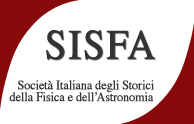Speaker
Description
On March 27th, 1927, Heisenberg published the paper in which he introduced the uncertainty relations through his well-known γ-ray microscope thought experiment. Since then, debates and commentaries on the origin of the uncertainty relations have continued for a century (see, for instance, Bacciagaluppi and Valentini 2009; Beller 1999; Brown and Redhead 1981; Hilgevoord and Uffink 1985, 2024; Jammer 1974; Uffink 1990). Going back to 1927 through a selection of letters — including an unpublished letter from Jordan to Rosenfeld — this talk aims to add a crucial piece to this century-old puzzle by shedding new light on the differences between Heisenberg and Bohr's conceptual basis for the uncertainty relations. According to the received view, Bohr derives the uncertainty relations from the wave-particle duality of light. By contrast, it is commonly stated that Heisenberg based them on the discontinuity in the interaction between the electron and the light quantum, i.e., the uncontrollable change resulting from the Compton effect (cf. Camilleri 2009). I will challenge the received view by arguing that: (i) Bohr’s derivation of the uncertainty relations fundamentally relies on the use of classical concepts, consistent with their central role in his broader interpretation of quantum mechanics. (ii) The supposed contrast rooted in the wave-particle duality of light may stem from Heisenberg’s 1927 misrepresentation (or misinterpretation) of Bohr's ideas on the γ-ray microscope. This misrepresentation may have influenced the reception of Bohr’s interpretation, particularly regarding his ideas on the conceptual justification for the uncertainty relations, and contributed to obscuring the deeper significance of Bohr's complementarity principle, fully comprehensible only in light of (i).

